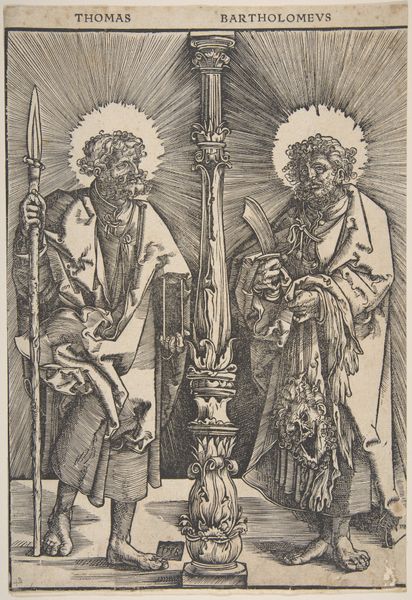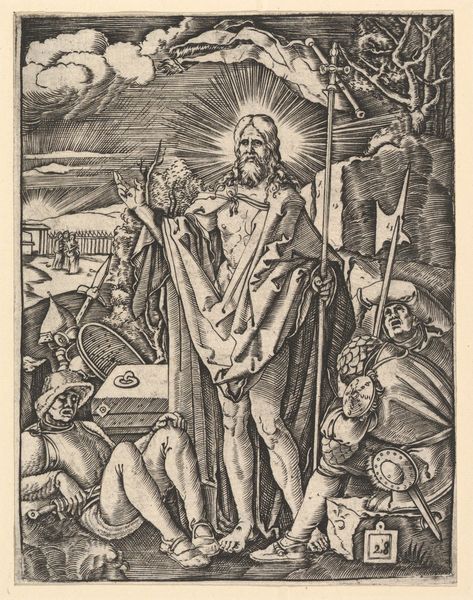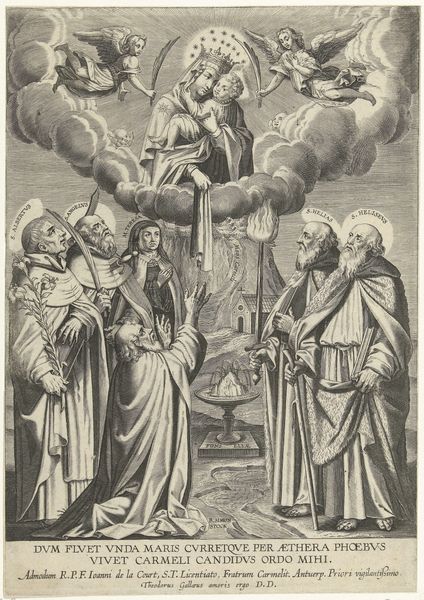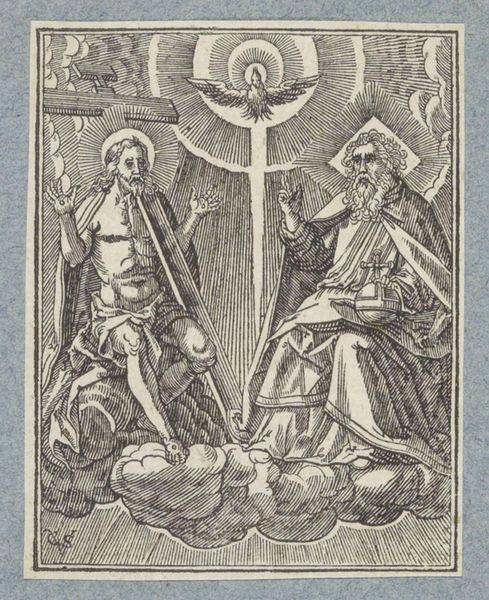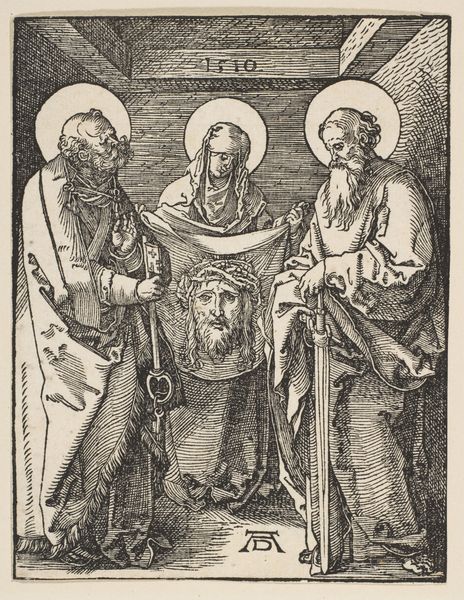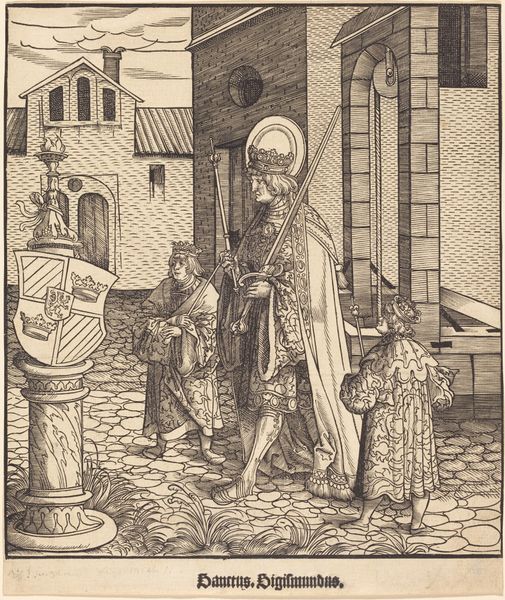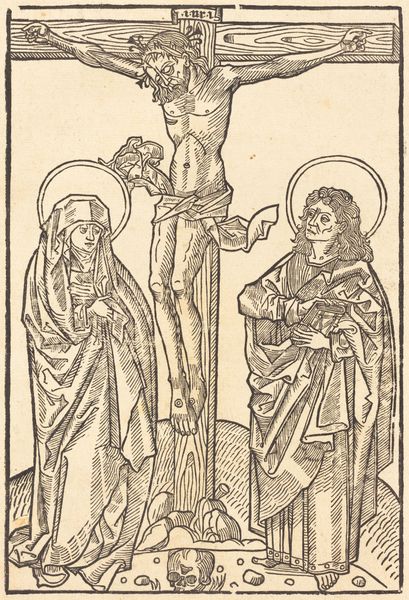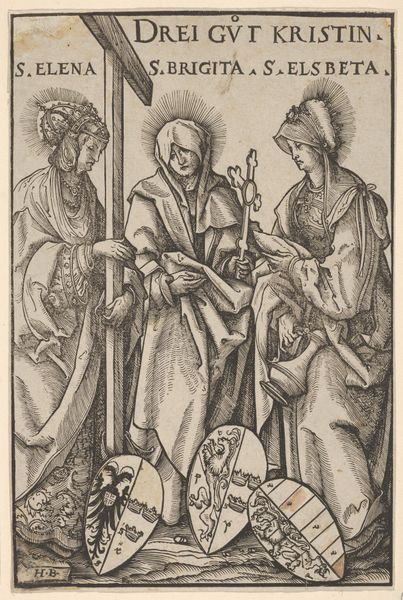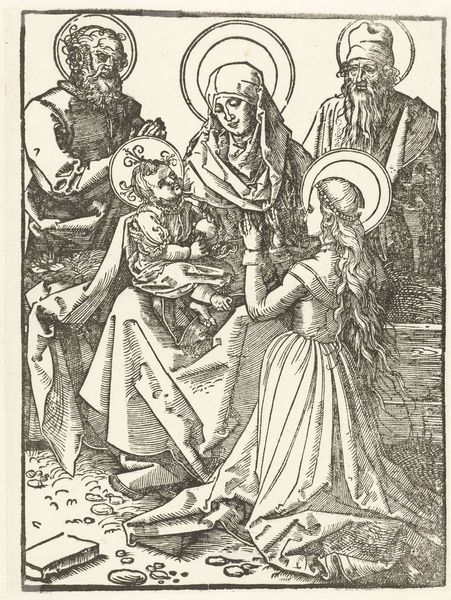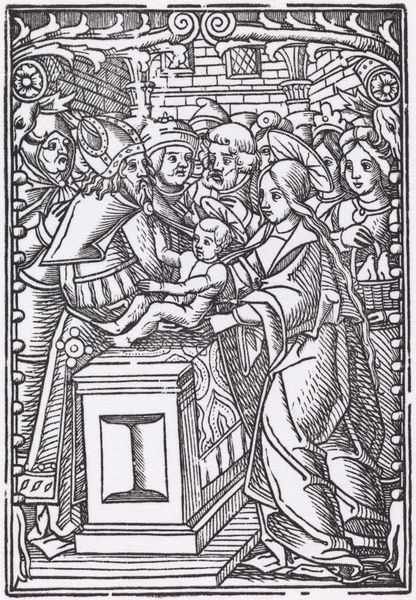
print, engraving
# print
#
figuration
#
history-painting
#
northern-renaissance
#
engraving
Copyright: National Gallery of Art: CC0 1.0
Editor: Here we have Hans Vischer's "Saint James the Less and Saint Simon," an engraving from 1518. The starkness of the black and white is really striking, and the figures, with their solemn expressions, feel so serious and imposing. What do you make of this piece? Curator: This engraving really speaks to the power of images as a form of cultural expression and social commentary. How do these figures embody ideas about faith, justice, and perhaps even resistance within the context of the Northern Renaissance? Consider, for instance, their attributes – the saw and the fuller’s club – which symbolize their martyrdoms. How does Vischer portray these figures, and what messages were conveyed about their identities and their place within the social and religious order of the time? Editor: The implements of martyrdom certainly give me pause, like there's an implied threat or warning. Do you think Vischer might have been commenting on the turbulence of the Reformation? Curator: Precisely! Art in the Northern Renaissance was deeply intertwined with social and political upheavals. The Reformation challenged established authority, and artists like Vischer engaged with these debates through their work. Do you notice how the artist chose to portray the saints in contemporary clothing instead of traditional garb? What statement do you think the artist was trying to make through these choices? Editor: I do see that! Presenting them as more contemporary figures definitely makes them seem more relatable and maybe encourages viewers to see themselves in these stories of faith and sacrifice. I hadn't quite appreciated all the layers of commentary here. Curator: It's crucial to acknowledge the intersectional dimensions embedded in historical artworks like this. Vischer’s piece contributes to broader narratives about faith, power, and the individual's role within society. By examining its historical, social, and cultural contexts, we uncover its lasting relevance to contemporary dialogues about justice, representation, and the ongoing quest for social change. Editor: That makes sense. Now I’m seeing it less as just a religious image, and more as a powerful statement about standing up for what you believe in. Curator: Indeed. Let's carry that thought with us.
Comments
No comments
Be the first to comment and join the conversation on the ultimate creative platform.
